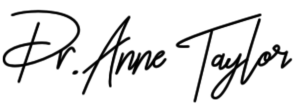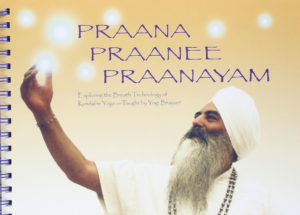“The main problem in the world is stress. It is not going to decrease—it is going to increase. If through pranayam the shock can be harnessed, the entire stress and disease can be eliminated”—Yogi Bhajan
What is Pranayama? (also called pranayam)
As we come into this world we take our first breath of air and let out a loud cry. To breath is to be alive. Interestingly though, many of us do not breath correctly, often due to stress, anxiety, and/or depression. The yogic technique of pranayama (also called pranayam) is the ancient yogic science of breath control. By controlling your breath you are also directing prana, the life force energy, throughout your body and mind. Pranayam is conscious breathing, and all knowledge is said to come from the wisdom of the breath. Let’s take a moment and break down the Sanskrit word prana:
- Prana = the life force energy
- Pran = first unit
- Ayam = expansion
- The “Science of Breath” controls the movement of prana through the use of breathing techniques
The air we breathe contains oxygen, nitrogen, water vapor, argon, carbon dioxide, and other trace gases. Various yogic traditions teach us that there is so much more going on then mechanistic exchange of gases. Prana rides on the wave of the breath, and as we breath we move the life force energy in and through our body and mind.
Why Practice Pranayama?
Yogic pranayam breathing is the first line of defense in reducing stress, anxiety, and stress-induced depression. Pranayam is free to practice and simple to learn. Although there are more advanced pranayam practices, simple techniques are abundant and can be done by just about anyone. Here are a few important reasons to consider adding pranayam to your daily routine.
- Your rate of breathing and your state of mind are linked.
- As you slow your rate of breathing, you gain more control over your mind.
- When the mind follows the breath, then the body follows the mind.
- When breathing slows, the mind calms down and becomes less anxious.
- When breathing increases (assuming you’re not exercising) the mind becomes more chaotic.
- Practicing pranayam reduces diseases by helping to heal the autonomous nervous system.
- When practiced as directed, pranayam is safe, free, and easy to do.
- Reduces health care costs.
When practiced correctly and consistently, pranayam is highly effective for improving health, building resilience, increasing vitality, and developing higher consciousness. This can readily be demonstrated using heart rate variability biofeedback, because pranayam has an immediate impact on the autonomous nervous system. I have found that a regular practice of pranayam has reduced my stress naturally and lifts my spirits as well.
How Do I Practice Pranayama?
There are many different schools of yoga that teach pranayam, perhaps there is a local yoga class near you that incorporates pranayam. When I teach Kundalini yoga I almost always begin the class with at least 5 minutes of pranayam. You can watch many of my YouTube videos for free. I highly recommend beginning with Long Deep Breathing, because it is the cornerstone to proper breathing and has no negative side effects when practiced as directed.
I highly recommend Praana, Praanee, Praanayam:Exploring the Breath Technology of Kundalini Yoga as Taught by Yogi Bhajan®. Pranayam is used by various schools of yoga and there is significant overlap in how to do yogic breathing. I like this book because it is pragmatic, easy to follow, and suitable for beginners and advanced practitioners alike.
A few important elements to remember when practicing pranayam are the following:
- Keep your spine straight if the directions call for a seated posture.
- On the inhale, be sure to fill your lungs as completely as you can. Allow your diaphragm to expand downwards. Your lung capacity will expand with practice.
- On the exhale, be sure to empty your lungs as completely as you can. The diaphragm will rise up as you exhale.
- Pay attention to the number of counts if the pranayam calls for it.
- Apply neck lock, unless otherwise directed.
- Keep the breath controlled with an even inhale and fluid exhale. Don’t gasp for air–back off the on the time if this happens until your lung capacity develops.
- If you feel dizzy-STOP. Take a few normal breaths and slowly return. If dizziness continues select a different pranayam.
- Follow directions and precautions, if any.
When Do I Practice Pranayama?
Pranayam can be practiced at any time and best done on an empty stomach. It is best to be consistent with your practice time, however until you establish a natural routine, any time is much better than no time. Pranayam is often combined with meditation or exercise postures, but can be done by itself. If I have trouble sleeping, I often practice a simple pranayam to draw my focus away from my thoughts and gradually sleep returns.
Please share your experience with pranayam so that others may be inclined to give it a try. Thank you!





Hello Anne, thanks so much for this interesting article concerning pranayam. I just started yoga training some few days back and I was told about this science of breathing present in yoga and I got interested in it, that’s the reason I got to this site to get more knowledge about it. It is actually great for us to be able to manage our mind by breathing and I like this. Thanks for giving the various ways and manner by which it could be practised. Thanks
Hi RoDarrick, thanks for taking the time to read my post on pranayam and commenting on it. Pranayam, the science of breathing, is highly effective and free. It has really helped me to master my own monkey mind (at least most of the time) and bring more calm into my life. Best to you in your breathing practice and your new yoga regime. It’s a game changer!
Anne
Hello doc, your post was an awesomely written one. I am not so sure I have heard about the pranayama before. It is true that we live in a world of stress and the stress is not going to go. It keeps coming. I think this practice is a really good one but I am partially asthmatic and I want to know ifthe practice is still ideal for me since it involves breathing. I await your prompt reply.
Hello Henderson, Thank you for reading my post on pranayam, and your question relating to asthma. This is an excellent question and I appreciate you taking the time to ask.
As always, check with your health practitioner before beginning any new regime. That said, I recommend that you begin pranayam slowing and build up. For example, try Long Deep Breathing as a first pranayam. As simple as this exercise may seem, it has mighty impact when practiced over time.
Long Deep Breathing is a cornerstone of Kundalini yoga. This yogic breath or pranayam has many benefits, here are just a few:
relaxes and calms you as it activates the parasympathetic nervous system (rest and digest branch)increases the flow of pranareduces the build-up of toxins in your lungsstimulates brain chemicals to help lift depressioncleanses the bloodaids in quelling addictive tendencies
Begin Long Deep Breathing by sitting with a straight spine. Expand the abdomen (open up the belly) as you slowly begin to inhale.Draw the breath through the chest and open up the rib cage.Continue to draw the breath up to the collarbones so that the upper lungs fill as well.Exhale and reverse the process; bring the navel point towards the spine as you complete the exhale.
If you feel any dizziness, stop and resume your normal breathing. With practice, Long Deep Breathing becomes second nature. Start with 1-3 minutes and see how you feel.
Once you master Long Deep Breathing, continue with segmented breath, i.e. into two strokes and exhales two strokes. A stroke means that the breath is segmented.
Hold off on any pranayam exercises that require expanded lung capacity such as the 1-minute breath (inhale 20 seconds, suspend 20 seconds, exhale 20 seconds). Do not attempt the more challenging pranayams until you have mastered the easier ones. Use common sense and begin slowly.
Here are two articles that support the use of pranayam for people with asthma:
https://www.ncbi.nlm.nih.gov/pmc/articles/PMC3017963/
https://breathe.ersjournals.com/content/10/4/312
This is a start and I will put this topic in my queue for a future blog post. I would love to know how pranyam works for you.
Anne
Really nice post on How to relieve stress naturally. I try my best to practice meditation and deep breathing whenever I can to help clear my head. I especially enjoy that method when I am having troubles falling asleep. While I have not heard of Pranayama before, it is something I will look more into because I truly believe in the power of mind over matter and breathing to clear away those pesky thoughts. Great post and I look forward to reading more to come!
Hi Nicki, Great to hear that you are practicing meditation and deep breathing. Excellent. As a teacher, I find that sometimes people attempt to meditate for too long as they’re learning. 3, 5, or 11 minutes is a good starting point. And remember, every time you are meditating and notice that your mind has drifted elsewhere, that is a win. That’s using the “meditation muscle.” Eventually, the spaces between thoughts lengthens.
Thanks for checking in–Anne